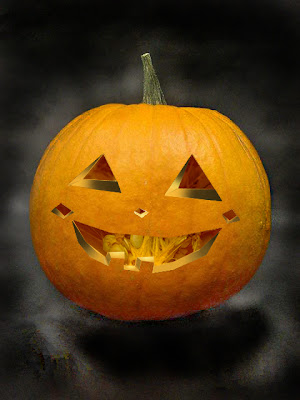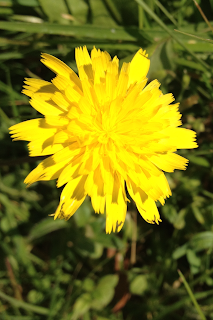Friday, December 21, 2012
Tuesday, December 18, 2012
Sunday, November 4, 2012
Web Assignment #5 : Beauty
How do you define beauty in photography?
Aesthetically pleasing images
What are the characteristics of photographic beauty?
- evokes strong emotion or wonder
- makes person relive an emotional memory or feeling (close to the heart)
- a connection or lure to the image or scene portrayed
Can something "ugly" be considered beautiful?
Yes, a good photographer can make even the ugliest
thing appealing by the way they portray the figure
Why?
Nothing is truly ugly, "beauty is in the eye of the beholder"
How?
Picture the figure like a baby. everyone likes babies. or kittens.
Whether it be by the angle, setting, make-up, costume, mask, contrast, or human-like quality it can poses by the photographer's posing of the subject, a photographer can use the environment and highlight on it's interesting or provoking qualities to induce fascination in the photo or maybe even likeness. This can lead from a liking to an affection and when you like like something, you tend to bring out it's good qualities, and all of a sudden it's beautiful.
Example?
A beast is usually a feared, ugly and unappealing eye sore, but in this photo he is portrayed with love in his eyes and human-like qualities like clothing and standing. The soft colors of his fur blend into the background and the pretty girl, also making him not appear as ferocious or mean. More approachable. The background of a blurred starry night and he faces of the two figures entranced with one another romanticizes the scene and brings the viewer to feel warm and a longing for love. In these ways the beast is transformed from a monster to a lover and gains appeal and beauty in the eyes of the viewer.
Aesthetically pleasing images
What are the characteristics of photographic beauty?
- evokes strong emotion or wonder
- makes person relive an emotional memory or feeling (close to the heart)
- a connection or lure to the image or scene portrayed
Can something "ugly" be considered beautiful?
Yes, a good photographer can make even the ugliest
thing appealing by the way they portray the figure
Why?
Nothing is truly ugly, "beauty is in the eye of the beholder"
How?
Picture the figure like a baby. everyone likes babies. or kittens.
Whether it be by the angle, setting, make-up, costume, mask, contrast, or human-like quality it can poses by the photographer's posing of the subject, a photographer can use the environment and highlight on it's interesting or provoking qualities to induce fascination in the photo or maybe even likeness. This can lead from a liking to an affection and when you like like something, you tend to bring out it's good qualities, and all of a sudden it's beautiful.
Example?
A beast is usually a feared, ugly and unappealing eye sore, but in this photo he is portrayed with love in his eyes and human-like qualities like clothing and standing. The soft colors of his fur blend into the background and the pretty girl, also making him not appear as ferocious or mean. More approachable. The background of a blurred starry night and he faces of the two figures entranced with one another romanticizes the scene and brings the viewer to feel warm and a longing for love. In these ways the beast is transformed from a monster to a lover and gains appeal and beauty in the eyes of the viewer.
Thursday, November 1, 2012
Tuesday, October 30, 2012
Wednesday, October 24, 2012
Saturday, October 20, 2012
Web Assignment #4
1. Who was Alfred Stieglitz and why is he noteworthy in the history of photography?
Alfred Stieglitz was a famous American photographer known for his impact on photography as an art form. He spent a ton of time and labor into his photographs to make them perfect and tried to capture photos in an artistic and appealing way.
2. Choose a photograph he made, upload it to your blog, and explain why you chose it as your favorite by him
.
I really liked this photo of his because of the dark silhouette of the man and his contrast with the white horse. The man almost looks like a shadow that's lost it's way and made friends with a horse. Maybe they were both looking for somebody.. I don't know, that's what I made their stories as..
3. With what famous painter was he in a relationship? Who was she? Upload a painting by her that you like.
Alfred Stieglitz was in a relationship with painter Georgia O'Keeffe. She took many pictures in New York.

I really thought this picture was beautiful because of the kind of contradicting flower and cow skull. Skulls are ominous and represent death, yet is lightly decorated with a delicate flower that I think symbolizes life and beauty. The rolling hills and bellowing clouds make me think of deep western country, freedom and peace.
Alfred Stieglitz was a famous American photographer known for his impact on photography as an art form. He spent a ton of time and labor into his photographs to make them perfect and tried to capture photos in an artistic and appealing way.
2. Choose a photograph he made, upload it to your blog, and explain why you chose it as your favorite by him
.
I really liked this photo of his because of the dark silhouette of the man and his contrast with the white horse. The man almost looks like a shadow that's lost it's way and made friends with a horse. Maybe they were both looking for somebody.. I don't know, that's what I made their stories as..
3. With what famous painter was he in a relationship? Who was she? Upload a painting by her that you like.
Alfred Stieglitz was in a relationship with painter Georgia O'Keeffe. She took many pictures in New York.

I really thought this picture was beautiful because of the kind of contradicting flower and cow skull. Skulls are ominous and represent death, yet is lightly decorated with a delicate flower that I think symbolizes life and beauty. The rolling hills and bellowing clouds make me think of deep western country, freedom and peace.
 |
| Alfred Stieglitz, 1902 by Gertrude Käsebier |
Tuesday, October 16, 2012
Sunday, October 14, 2012
Pinhole Camera Invert
Below is a picture(s) of tree branches in front of a brick wall with the sun shining down.
Before
After
Tuesday, October 9, 2012
Tilt Shift
Something I learned from this assignment is that not only do you have to be at the right angle, but also from a far enough distance to create a tilt shift. It was frustrating when I'd have a super good photo but wouldn't turn out as well at a tilt shift because it wasn't far enough away. It was exciting though, to take the pictures from high above and get a perspective you wouldn't normally observe from. I also learned that despite taking all of these photos with my iphone that I got some really amazing photos.. I also learned how to work my focus, which probably could have come in handy a while ago, guess I can do it from now on. I really enjoyed doing this project and I'm going to try some more on my own in the future.
Young Life Camp, hiked a mountain and jumped! Incredible feeling in that moment, accomplishing getting to the top and looking down at the tiny earth below us. Great experience, even more amazing people to share it with..
Taken at Beaver's game! Love this picture of the band on the field.
They won! A coincidence? I think not!
Taken at a Justin Bieber concert of people exiting below.
Little girls and security carpeted the arena, making it difficult to get anywhere, but got a fantastic picture out of it.
Another concert picture, my favorite part is the big spotlight nearly coming at you. Makes me feel like I could be transported into the miniature world.. Maybe if I look close enough....And last the final concert photo! I believe he was singing never say never... I love the bright purplish, pink stage against the dark black/blue audience; makes it pop.
Sunday, October 7, 2012
Hughes Stephanie 4B Web Assignment #3
1. What is a Brownie Camera?


A Brownie Camera is an inexpensive box camera that introduced the idea of snapshot.
2. Who invented it, and when?
The Brownie Camera was invented by Eastman Kodak in the year 1900.
3. How did it change society, and of course, the photography world?
It introduced the idea of snapshot, the idea that anyone could use cameras and that a person didn't need a big, expensive camera to get quality photos. I believe it opened the world to the idea of a camera as a household product. More photos could be taken by more people, which leads to much more photography and developments in an everyday consumer camera. With a
simple camera design, photography could be expanded to the popular, modern world.
Monday, September 24, 2012
Photo Internet Research
1. What is a daguerreotype?
What did the surface of a daguerreotype resemble? When were they prominent?
What photographic process did the daguerreotype replace?
According to the dictionary,
a daguerreotype is an obsolete photographic process, invented in 1839, in
which a picture made on a silver surface sensitized with
iodine was developed by exposure
to mercury vapor. The surface of a daguerreotype resembles that of a
mirror because images are formed on a reflective silver plate and has to be set
at an angle when finishing as if “reflecting” a dark image. Daguerreotypes were
prominent from 1840-1855. Daguerreotypes replaced the photographic process of camera obscura.
2. What is an "albumen" print? What was the main
"ingredient" of the albumen process? When did the albumen process die
out?
An albumen print was the first profitable and notable method of developing a photographic print on a negative made of paper. The main “ingredient” of the albumen process was albumen found in egg whites to better fuse photographic chemicals together to the paper. The albumen process died out around the 1920’s.
An albumen print was the first profitable and notable method of developing a photographic print on a negative made of paper. The main “ingredient” of the albumen process was albumen found in egg whites to better fuse photographic chemicals together to the paper. The albumen process died out around the 1920’s.
3. What is a "stereograph?" When were they
popular?
A stereograph is a technique used to show depth in pictures by putting
two 2-D images together to make a 3-D image when viewed by a stereoscope.
4. What is a "carte de visite?" What were they
used for?
A carte de visite was a small
albumen print, sometimes with writing and were usually used as photograph cards
in the 1800’s.
5. Who were Matthew Brady and Alexander Gardner? They both
are notable for what type of photography? When were they active? Post two
noteworthy photographs for each photographer.
Mathew Brady was a famous American photographer in the 1800’s made famous by his photos of celebrities and recordings of the American Civil War. Alexander Gardner was a Scottish photographer in the United States in the 1800’s who also became famous from his photography of the American Civil War, along with photos of President Lincoln. They were active photographers in the 1860’s and continued some after the Civil War.
Mathew Brady
Alexander Gardener
Subscribe to:
Comments (Atom)

























